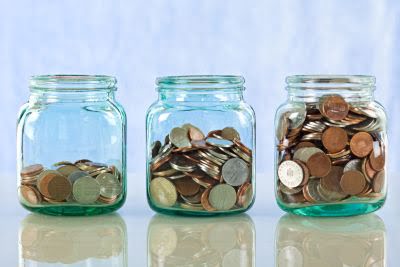
Amongst the millions of questions regarding financial matters, the most popular one is undoubtedly “How do I save my money?”. Here are 3 common ways that could help you save a sizable amount for when it’s time to retire.
1) Contribute to EPF, do NOT withdraw
For Malaysians, EPF is undoubtedly the easiest way to save your money. Your personal contribution of 11% aside, your employer’s mandatory contribution of 13% (for employees earning less than RM5,000 monthly salaries) makes it a total of 24% of your monthly wages saved under your name each and every month.
To top it off, EPF’s average return of 5% per year is significantly higher than any fixed deposit interests in the market right now.
Tips: Firstly, get employed at a company that contributes to EPF. Try to keep your money in your EPF account for as long as possible because there simply aren’t any other bank deposits with higher interest rates in the market. If you can help it, DO NOT use any of your EPF sub accounts to pay for your home or buy a computer, so you can take full advantage of EPF’s high interest rate to maximize your returns.
2) Put your money aside the good old fashion way
Saving your money requires determination and discipline. If you aren’t already doing so, try putting aside a small percentage of your salary every month-end and save it in a separate bank account, preferably one without any easy withdrawal facilities (eg. ATM).
When you have a moderate amount, transfer the money to a high-interest fixed deposit account so it can generate greater interests whilst stopping you from accessing the funds every time you feel like getting a new handphone or a new pair of shoes.
To find the best fixed deposits in the market right now, check out our fixed deposit comparison table.
Tips: Like many other things in life, saving is an endeavour that many find hard to adopt especially in the beginning. To ease yourself into your money-saving journey, you may wish to start off with a moderate amount (say 5-10% of your wages) so that it does not affect your cash flow to the extend of making you give up altogether. Over time, you can try to increase the amount as the act of saving becomes a habit. Also, when it comes to saving, it helps to start as young as possible so you can reap the benefits of compound interest over the long run.
3) Use your money to invest in something
If you have moderate tolerance to risk, are not close to retirement age and have a sizable amount in your savings or fixed deposit account, you’ll probably want to consider using some of the monies you have for investment purposes.
Be it in shares, gold or real estate; investment is a great way to save even MORE money because the potential returns are usually much greater than, say, putting your money into a bank. The downside, however, is that investment involves RISKS – the risk of non-performance from your investments, or in certain cases, the risk of total evaporation of value for your investments caused by adverse market conditions.
Tips: Not all categories of investments are born equal, so you are advised to do your homework well before you engage with any kind of investment. For example: properties are considered medium-risk investments; they generally enjoy consistent growth but they also have low liquidity (i.e. not easily turned to cash). Shares, on the other hand, are considered high-risk investments; they are prone to fluctuations in value caused by volatile market, which basically means you could potentially GAIN a lot or LOSE a lot. Whichever form of investment you choose, it is best to make a genuine effort to learn about it before you commit.
Love this article? You might also wish to read about the importance of diversification in investment.